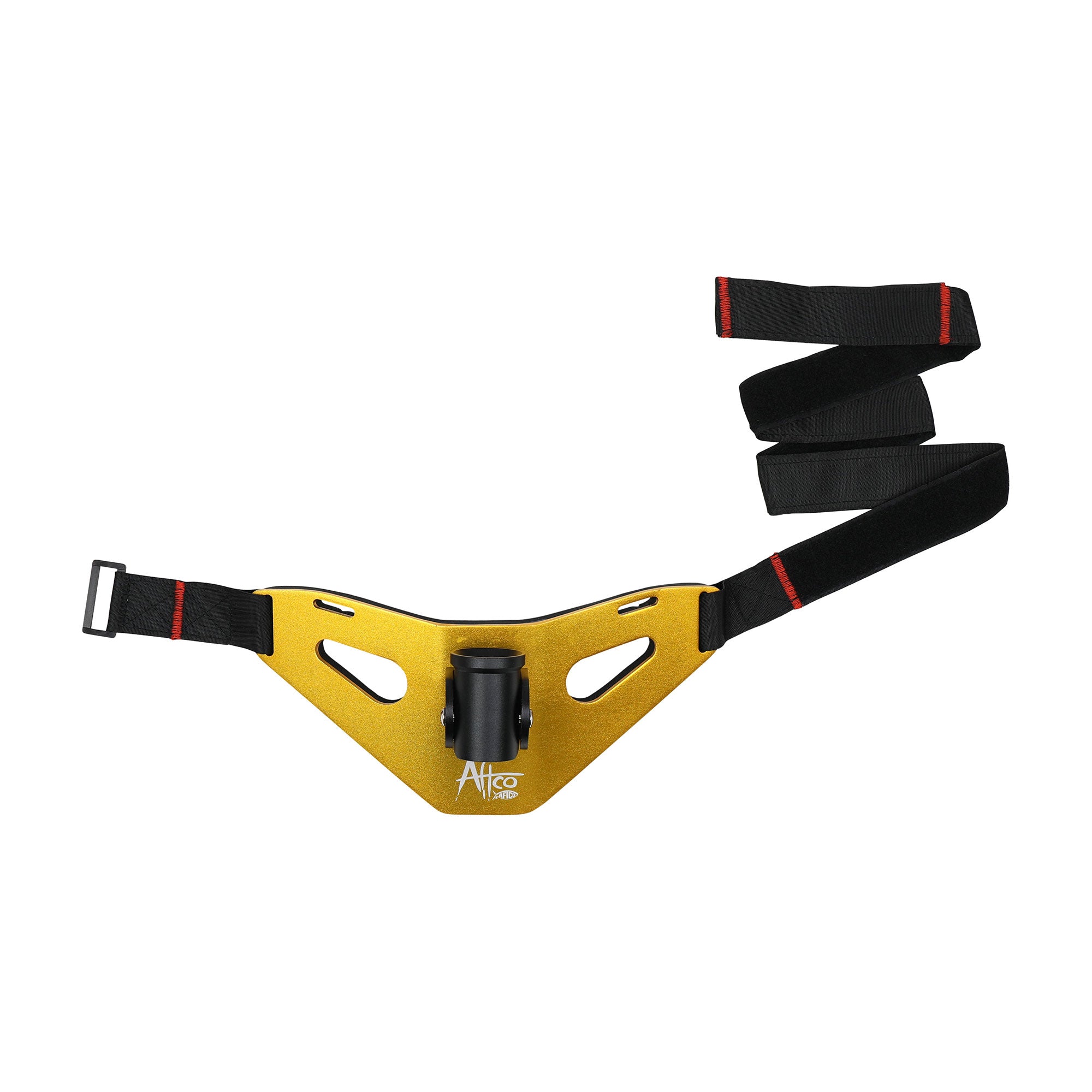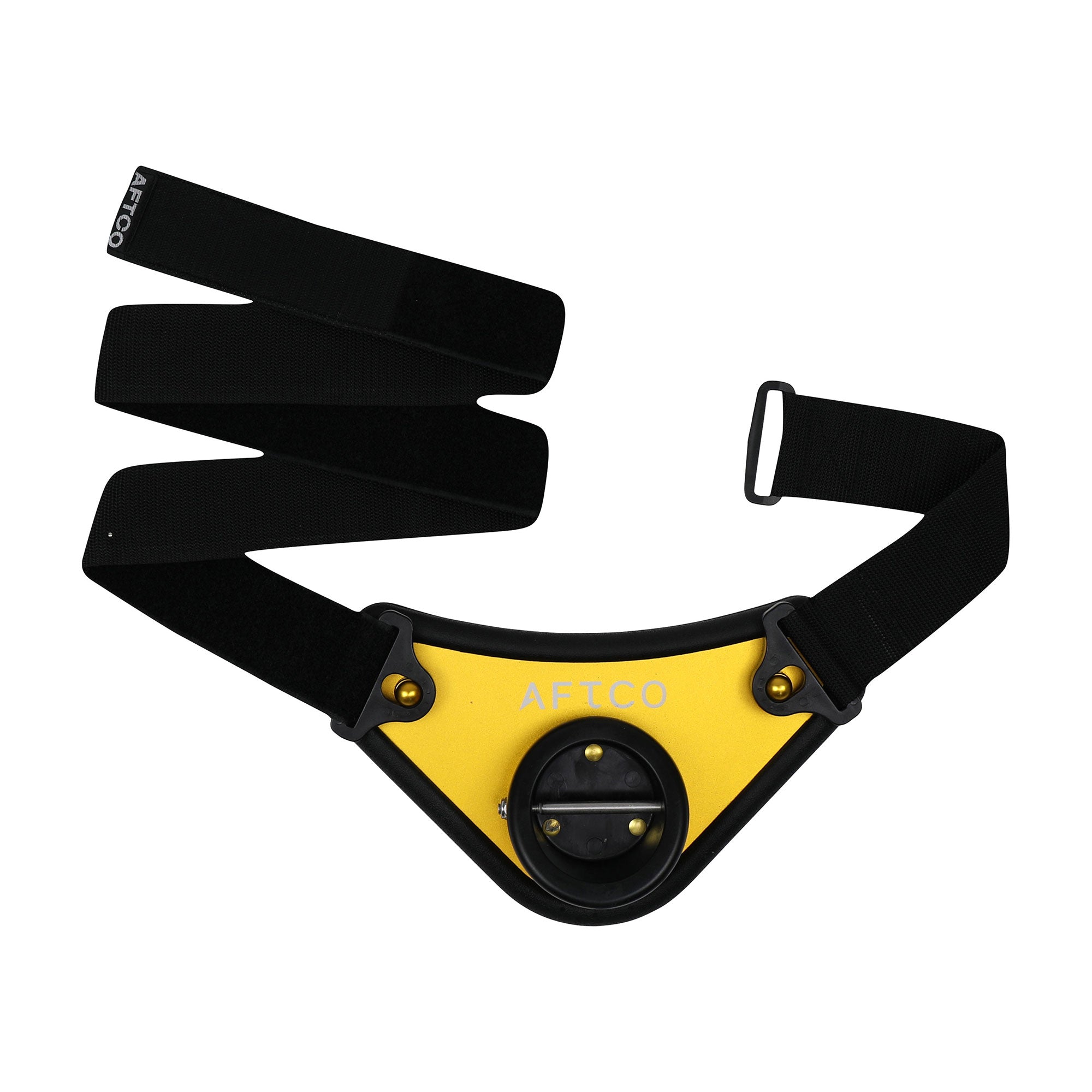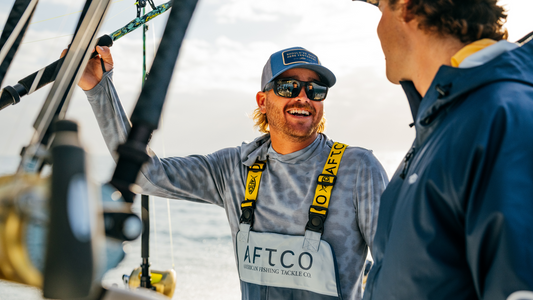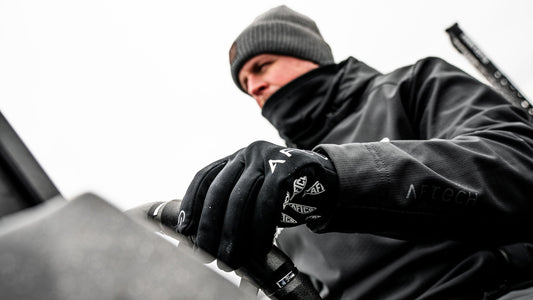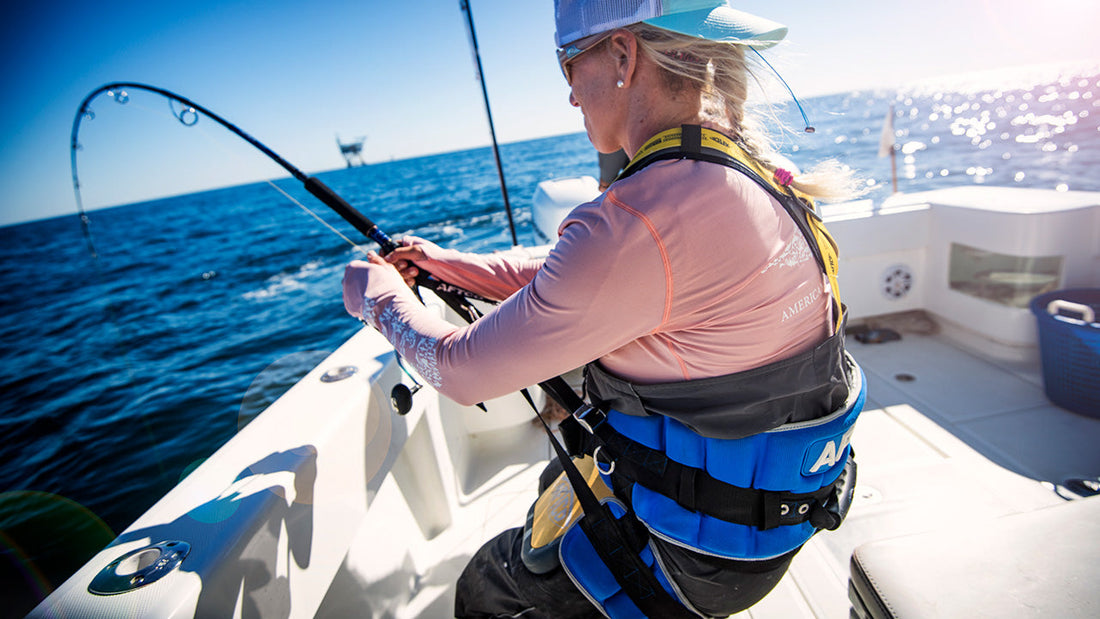
Proper Fit of a Fighting Belt and Harness
For saltwater anglers chasing bluefin tuna, using a fighting belt and harness relieves pressure on your body to help you win the battle faster. To successfully land your catch, our AFTCO fighting belt and harness guide has you covered.


What is a Fighting Belt and Harness?
Fishing belts and harnesses provide anglers with a significant advantage when battling tough fish. Utilizing a fishing harness enhances the effectiveness of fighting belts. Unlike regular belts, fish fighting belts are worn around anglers’ thighs, securing the rod butt/gimbal at the center. Positioning the harness on the anglers’ lower thighs–the strongest part of the body–minimizes back strain. While the fishing belt secures the rod, the fishing harness enables anglers to maximize power and leverage.
Types of Fishing Belts & Harnesses
There are thousands of types of fishing harnesses and belts on the market. For the best experience on the water, we have created belts and harnesses for light, medium, and heavy tackle. AFTCO offers six fishing belts and three harnesses designed for tackle ranging from 30 lb to 130 lb. The sections below break down the features of each belt so you can find the best one for you.
Arena Belt: 12 to 30 lb Tackle
The Arena is AFTCO’s fishing belt, specifically designed for anglers chasing small billfish, king mackerel, and other small species using lighter tackle. Crafted with closed-cell foam for comfort, it features quick clips on the corners allowing anglers to easily put it on and take it off. Anglers should wear the belt low on their hips rather than on their stomach, enabling them to leverage the muscles in their legs more effectively.
Alijos Belt: 20 to 50 lb Tackle
The Alijos belt is designed for standup fishing for small to medium-sized gamefish like tuna, yellowtail, and kingfish. Anglers can pair this fishing belt with the Maxforce shoulder harness to relieve back pressure and help spread out the load. When using a fishing belt and harness, it’s essential to adjust the straps so that the weight of the fish is evenly distributed. If you’re an angler who uses spinning gear, we recommend placing more of the load higher up on your shoulders. For conventional gear, anglers should distribute more weight throughout their hips and legs. Additionally, snapping the carabiner hooks together helps maintain tension.
Socorro Belt: 50 to 80 lb Tackle
The Socorro is a level up from the Arena and Alijos belts. It’s a medium-sized belt for standup fishing when targeting tuna, marlin, wahoo, and big yellowtail. Like with the other belts, keep it down by your hips. Anglers can put this fighting belt up higher on their thighs to maximize leverage, though.
For pairing with a harness, we recommend the Maxforce 1 harness. It has bio-foam straps that won’t come undone and a synthetic terry cloth liner to keep anglers cool and chaff-free. To put it on, start by buckling it around your waist and snapping the quick clips on the belt first. Anglers can adjust it using the ladder lock on the side, and the clip floats on the back should be close to your body. After adjustments, your fishing harness and belt should be low and tight on your body.
Clarion XL & Vallarta XL: 80 lb to Unlimited Tackle
The Clarion XL and Vallarta XL belts are the perfect match for anglers chasing large gamefish like blue marlin or bluefin tuna. The Clarion XL is heavy-duty and lightweight because it’s made of stamped aluminum. Feature-wise, it has extra thick foam molded onto the backside with vent slots to keep anglers comfortable during long fights. We recommend pairing the Clarion XL belt with the Maxforce 1 or Maxforce XH harnesses. Both will give anglers more leverage and keep them comfortable with big gamefish on the line.
The Vallarta XL is AFTCO’s largest fishing belt. It has a 20% larger pad than the Clarion belt, placing less strain on the angler’s body. It has a glass-filled nylon gimbal pocket that keeps rod butts in the optimal fish-fighting position. It’s adjustable and fits most waists 28 to 50 inches wide. Like the Clarion belt, the Vallarta XL works with the the Maxforce 1 or Maxforce XH harnesses. Anglers can also add a spin strap with their Maxforce harnesses of choice. From there, attach the D-rings to the harness clips.

How to Fit a Fishing Belt
Once you reach your fishing spot, all that’s left is to gear up with your fighting belt and harness so you’re ready for action. Keep the fishing belt low over your thighs, not around your waist. Lowering the belt helps spread the weight and create a platform to push your rod down, effectively dispersing the pressure.
The AFTCO Maxforce shoulder harness has two straps that wrap around your shoulders, resembling a backpack. This harness is designed to complement light gear, such as the Alijos belt for 30–50-pound tackle. Equipped with four stainless steel ladder locks, it easily adjusts to provide the perfect fit. Even with pressure on the line, the pure brass cross-lock clips securely attached to reel harness lugs.
The Maxforce 1 and Maxforce XH harnesses feature two back straps. The top strap goes around the lower back, while the bottom strap secures below your bottom. When connected to a fishing harness and reel, it should form an equilateral triangle with the reel, the body, and the gimbal. Your harness and belt are good to go when you observe a triangle formed by these three components these three.

Ensure you adjust the straps and your fishing belt before casting. When a fish is on your line, keep the reel closer to your body. The arc in the rod will maintain pressure on the fish. Equipped with a fishing harness and belt, anglers can keep their hands free for reeling and providing stability while their legs assist in bringing the fish to the boat.
With gear made to last, all that’s left is to cast. To learn more about AFTCO fishing harnesses and belts, check out our blog here and shop our tackle collection.





